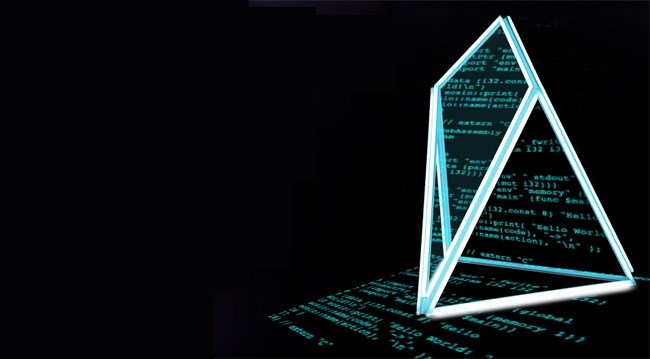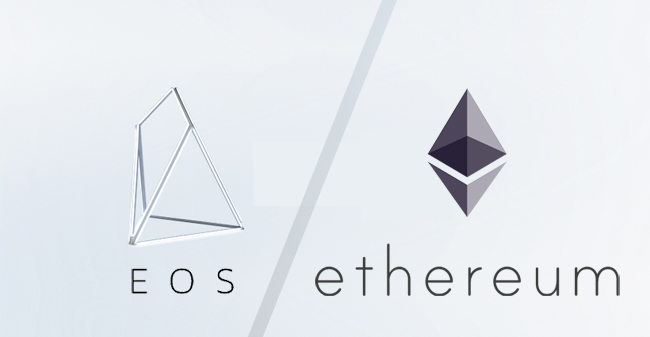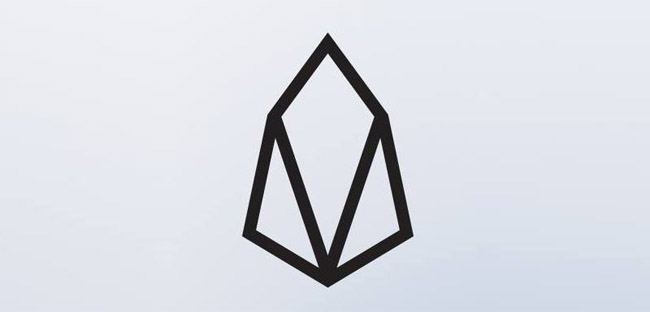When Bitcoin debuted in 2009 as the world’s first cryptocurrency, it was deemed to be a technological marvel due to its usage of blockchain technology.
Being the first in utilizing blockchain and thus establishing itself as being profoundly unique for its time, Bitcoin maintained its status as the standard in decentralized blockchains for years to come.
However, a few years down the road, we have reached a point where decentralized blockchains centered on cryptocurrencies do not seem to be enough of a use case to leverage the full potential of blockchain technology.
Projects such as Ethereum and NEO have come to light in the past few years, and have pushed the envelope. These projects have established themselves as fully-fledged developmental machines, allowing for more use cases and potential.
Yet blockchain proponents can’t help but wonder if the technology could be pushed further, to bring more innovation and improved use cases.
This restlessness and frenetic energy, an energy that is very much prevalent in the crypto space, is how EOS.IO, among others, have entered into the picture.
Introduced to the world as a one of its kind developmental platform, EOS.IO claims to provide a high throughput, projecting the execution of a million transactions per second.
Indeed, a million transactions per second!
To put matters in perspective, Bitcoin can perform around 5-7 transactions per second, while Ethereum being a development platform, can perform about 10-15 transactions in a single second.
If you think that this alone sets EOS.IO apart from its competitors, then think twice. You will be amazed to know how great the whole project sounds on paper.
Yes, on paper, because the project has not been launched on its main net yet and exists on a test net. However, its potential success and the hype behind it can be judged by the fact that even before launching its complete operations, EOS.IO boasts a market cap of $6.3 billion at the time of this writing.
Statistics provided by CoinMarketCap
EOS.IO is scheduled to release by June 2018. It launched its first feature complete pre-release on April 6, 2018.
Until the project’s pre-release, the unavailability of the final product along with a few mixed statements had made some parts of the community wary of EOS; however, the new release has shed light on the tangibility of the end product which EOS is offering to its potential users.
Oh, and if you are wondering what EOS stands for, keep wondering. The project has decided against formally defining it themselves. EOS then becomes whatever it wants to be for the individual, a project full of possibilities and potential growth. The beauty of EOS then lies with the token holder.
Without further ado, let’s learn further about what EOS.IO is, where it originated from, where it is going, and what can be expected of it a few years from now.
What is EOS? – A Brief History Lesson
Launched in June 2017 through an initial coin offering (ICO) held by its parent company, block.one, EOS is different from its blockchain counterparts such as Ethereum and NEO. EOS is a standalone operating-system-like solution for blockchain development and deployment.
The EOS Initial Coin Offering is scheduled to run until June 2018, has so far raised more than $1 billion, and is currently distributing Ethereum-based EOS tokens to its investors to signify their holdings.
However, EOS itself is not based on a blockchain platform. It instead operates on a software application, which provides users with the capabilities to design and structure their own blockchain solutions.
An excerpt from their site reads:
“block.one is building the EOS.IO Software but it will not configure and/or launch any public blockchain platform adopting the open source EOS.IO Software (the “EOS Platform”). Any launch of an EOS Platform will occur by members of the community unrelated to block.one. Third parties launching the EOS Platform may delete, modify or supplement the EOS.IO Software prior to, during or after launching the EOS Platform.”
The EOS software will employ both vertical and horizontal scaling solutions, which would allow the platform to perform a projected number of a million transactions per second (said to be 100,000 transactions at the very least). This would also prevent the EOS system from any scalability issues that could arise in the future.
The EOS software intends to be a one-stop solution for industry-level blockchain and decentralized application (DApp) deployment, providing essential facilities from smart contracts to accounting, and from databases to asynchronous communication. It will also boast of unique features such as inter-blockchain communication and transaction compression.
Furthermore, instead of using a single language for development purposes, EOS uses WebAssembly (wasm) languages, with C++ being the most suitable one. This could make EOS an easy to use project from a developer perspective.
Why?
Developers can choose to program in their language of choice instead of having to learn an all new coding language to operate on the platform (like Solidity for Ethereum).
Through its unique capabilities, EOS aims to be the primary development solution for big industries and small businesses alike. EOS would provide its users with the ability to create their own blockchains as well as decentralized applications – which are considered to be, the next wave of the Internet.
The direct benefits to the users come in the form of cheaper transaction fees and faster transaction times, as well as development functionalities which are currently not offered by other solutions.
However, even though the project sounds very good, it has garnered its fair share of doubts from data geeks, the cryptocurrency community, revered news publications, and John Oliver (you read the last one correctly).
EOS and Scam Allegations
The doubts mentioned above started arising from the very foundation of EOS, since block.one, the company behind the EOS.IO project, had a controversial co-founder.
The co-founder in question was Brock Pierce.
Pierce’s mention as cofounder has since been removed from the official site despite being reported by major publications such as the New York Times in the past.
A former child actor, Pierce is also known for his entrepreneurial experience, but most of it came from controversial places, such as earning his corporate experience by being associated with a former child sexual abuse ring, certainly not a very good image for the platform.
Transitioning from the allegations, Pierce found solace in the cryptocurrency world and made his way to be an elected director of the Bitcoin Foundation, a non-profit organization focused on developing the usage and awareness of Bitcoin, which soon after, saw at least a dozen resignations due to Pierce’s election.
However, Pierce’s colorful past did not stop block.one from being associated with him until John Oliver slammed the project in his TV show for being affiliated with Pierce and for not having a “working product”. Soon after the episode had aired, block.one severed its ties with Pierce.
Another point that keeps being brought up is how block.one and EOS maintain that the coins have “no purpose”.
“The EOS Tokens do not have any rights, uses, purpose, attributes, functionalities or features, express or implied, including, without limitation, any uses, purpose, attributes, functionalities or features on the EOS Platform.”
The text on the website reads.
However, supporters of the project always maintained that this was only the usage of legal language by the Cayman Islands based block.one, to steer clear from being slapped with unnecessary regulations within the U.S.
The leaders of block.one and EOS.IO always maintained that the investors were going to be provided with a token value when the project was to launch.
But this is where the other problem comes to light. Block.one took no responsibility to launch an EOS.IO blockchain platform where these tokens would be moved to.
“block.one is building the EOS.IO Software but it will not configure and/or launch any public blockchain platform adopting the open source EOS.IO Software (the “EOS Platform”). Any launch of an EOS Platform will occur by members of the community unrelated to block.one. Third parties launching the EOS Platform may delete, modify or supplement the EOS.IO Software prior to, during or after launching the EOS Platform.”
The project’s uncertainty of a “real product” created a lot of trust issues, and it was not until the release of the working testnet on February 9, 2018 that the people who were doubtful, gradually came to terms with EOS being a real project.
While the questions about Pierce somewhat fall on EOS to this day, the allegations of not having a working product have died down with EOS’ release of its testnet and now the pre-release of its feature-set.
EOS Benefits – Focus On a Positive Future
After ending its association with Pierce, EOS also focused more on presenting two of its stable entities as the main faces of the project. Namely, block.one CEO Brendan Blumer, who also founded real estate platform okay.com, and CTO Dan Larimer, who founded cryptocurrency platform BitShares and the content sharing platform, Steemit as well.
Same Product With Focused Ambassadors?
Larimer in particular, is a controversial and well-known figure in the technology sector, mainly due to his previous two projects. He also developed the delegated proof-of-stake (DPoS) governance model for BitShares, which will be used in the EOS.IO platform as well. Yet, he’s been known to abruptly leave projects that he has worked on in the past.
Through these efforts of PR and product release, EOS has steered itself away from controversial waters just a couple of months before its main release, proving that it is better to be late than never.
Venture Capital to Supplement EOS Ecosystem
Block.one has also launched a special $1.1 billion fund for organizations and individuals to present a vested interest for them in utilizing the EOS.IO platform for their blockchain and DApp development needs.
Dubbed as the EOS Venture Capital fund (EOS VC), the fund has allied with notable entities from the cryptocurrency industry to fund projects that are looking for investment.
By doing this, EOS aims to aid the ecosystem’s enhancement and encourage more and more people to join the platform by leveraging facilities from entities such as Galaxy Digital, a crypto-asset bank spearheaded by Mike Novogratz, a renowned cryptocurrency investor.
The platform has already started by bringing on board projects like intriguing projects like the “thug wikipedia”, officially known as Everipedia, on to their platform.
Breaking Down the EOS Code (Without Getting into the Weeds)
The company also published the EOS code on GitHub in September 2017, but the code has been overlooked by the critics again due to the same issue of the absence of a working product and with the project’s focus on flashier aspects, such as Pierce.
According to the review of several developers, and prominent members of the crypto community like Jackson Palmer, the code presents a few issues with being too confusing to follow as per industry standards.
Despite that notable issue, the code does prove to be quite sufficient for what it is intending to do and so it seems that EOS could function properly through the provided code.
More Developments to Follow
With the aforementioned positives, it is being mentioned that EOS.IO is also planning to unveil a few projects built on its platform during its run to the software’s main release in June 2018.
One of those projects that has already been revealed belongs to a popular yet controversial cryptocurrency exchange, Bitfinex, and it deserves a special mention as you would learn by reading the following details.
Bitfinex’s partnership with EOS for decentralized exchange development
Bitfinex announced on February 12, 2018 that it has chosen EOS to develop its decentralized exchange platform, dubbed as EOSfinex.
This came as both a positive and a questionable development, since out of all the possible exchanges in all the world, EOS was chosen by one which has found itself in a bit of hot water on repeated occasions.
While being a seasoned exchange that has been in operation since 2014, Bitfinex has faced quite a few troubles in the past couple of years.
Following a hack which was termed as the second-largest theft of a cryptocurrency exchange, Bitfinex reported in August 2016 that it had lost more than 119,000 Bitcoins. However, instead of compensating the affected customers directly, Bitfinex decided to launch its own token by the name of BFX and issued them to the affected individuals, only to buy them back at the price of $1 each.
After that intricate process was completed, Bitfinex announced that by following the procedure, it had reimbursed all of the affected customers. But it was widely argued that Bitfinex handled the recovery process after the hack rather dubiously.
However, Bitfinex’s run with controversies did not end there.
The exchange was then involved in another scandal, where Bitfinex’s relationship with an allegedly dollar-backed cryptocurrency, Tether, was questioned by none other than the U.S. Commodity Futures Trading Commission (CFTC) after reports broke of Bitfinex’s usage of the cryptocurrency in illicit means, such as to drive Bitcoin’s price higher.
In addition to this, several allegations were also reported by anonymous sources as well as the prominent Bitfinex’ed twitter user.
EOS could not have picked a more controversial exchange to partner itself with, but it seems that controversy seems to find EOS in the most unlikely of places.
Even from the usually amiable figures in the cryptocurrency industry.
Eos vs. Ethereum
With all the questions and comparisons about EOS vs. Ethereum and determining which one is a “better” platform, it seems that the heat of those arguments goes to higher places than internet forums, where none other than Ethereum co-founder and chief scientist Vitalik Buterin and block.one CTO Dan Larimer keep firing shots at each other.
Whether it’s Buterin’s seemingly casual response to a question about EOS lacking features that has Larimer responding point by point to it.
With the debate continued by the former, writing a detailed analysis on why the delegated proof-of-stake governance (DPoS) model (that will be used) by EOS seems to be unfair to other users of the network.
Only to be responded in a similar post by Larimer again. It seems that the rivalry between these two projects is not just limited to their respective communities of supporters but to their project leaders as well.
When you compare these two projects objectively, it is clear that Ethereum’s scalability issues and its slower transaction times have risen from its wider adoptability. However, if and when EOS launches its fully fledged operations, it will have the advantage of having an uncongested platform which could provide more capabilities than Ethereum in terms of scaling and transaction throughput.
In addition, EOS is aiming for usability and expression for creators, while also designing an environment for users to enjoy the platform with minimal friction.
It would remain to be seen whether EOS could then maintain that shinier edge over Ethereum with age; however, nothing can be said for certain until EOS shows its true capabilities after its launch.
But for any of this to be possible, EOS has to launch – so that it can be used by its target segment.
About the EOS Tokens
Even though block.one mentions that the EOS tokens currently being distributed are of “no use”, they are the only means of obtaining EOS tokens for when they would be converted to be used on the EOS software to supplement network operations.
This means that if you would like to obtain them, you can purchase them through the website’s token sale which is still live, at the time of this writing.
They can also be purchased through the exchanges that are trading them. However, whichever method you use to obtain the EOS tokens, remember that you need to go through a process in order for them to show up in the EOS software after its launch.
The potential purchaser would need to know that they would have to create a new pair of EOS private and public keys with an Ethereum address and take additional steps to make certain that they are included in the EOS snapshot.
Is EOS worth it?
The project has shown immense potential even after the shady figures and practices that have been associated with it. With less than a month and a half’s time left before the project is slated to be released, it would be unwise to deem the project a complete failure before seeing the eventual outcomes.
If EOS could really deliver on its promises and benefits, then it could very well be the next Ethereum in terms of development, it may be even take things a step further.
The EOS hype will be put to the test over the course of this year.
If EOS does not live up to the hype, it would not be the greatest disappointment in the cryptocurrency industry. Thanks to present contenders like Ethereum, Stellar, NEO, Waves, and QTUM, among others, if one project fails, the community can simply move on to the next relevant player.
Oh, and always remember: Investments in cryptocurrencies should be made at your own risk. This post was shared as a contribution or clarification of information. It should not be deemed as an investment recommendation.




